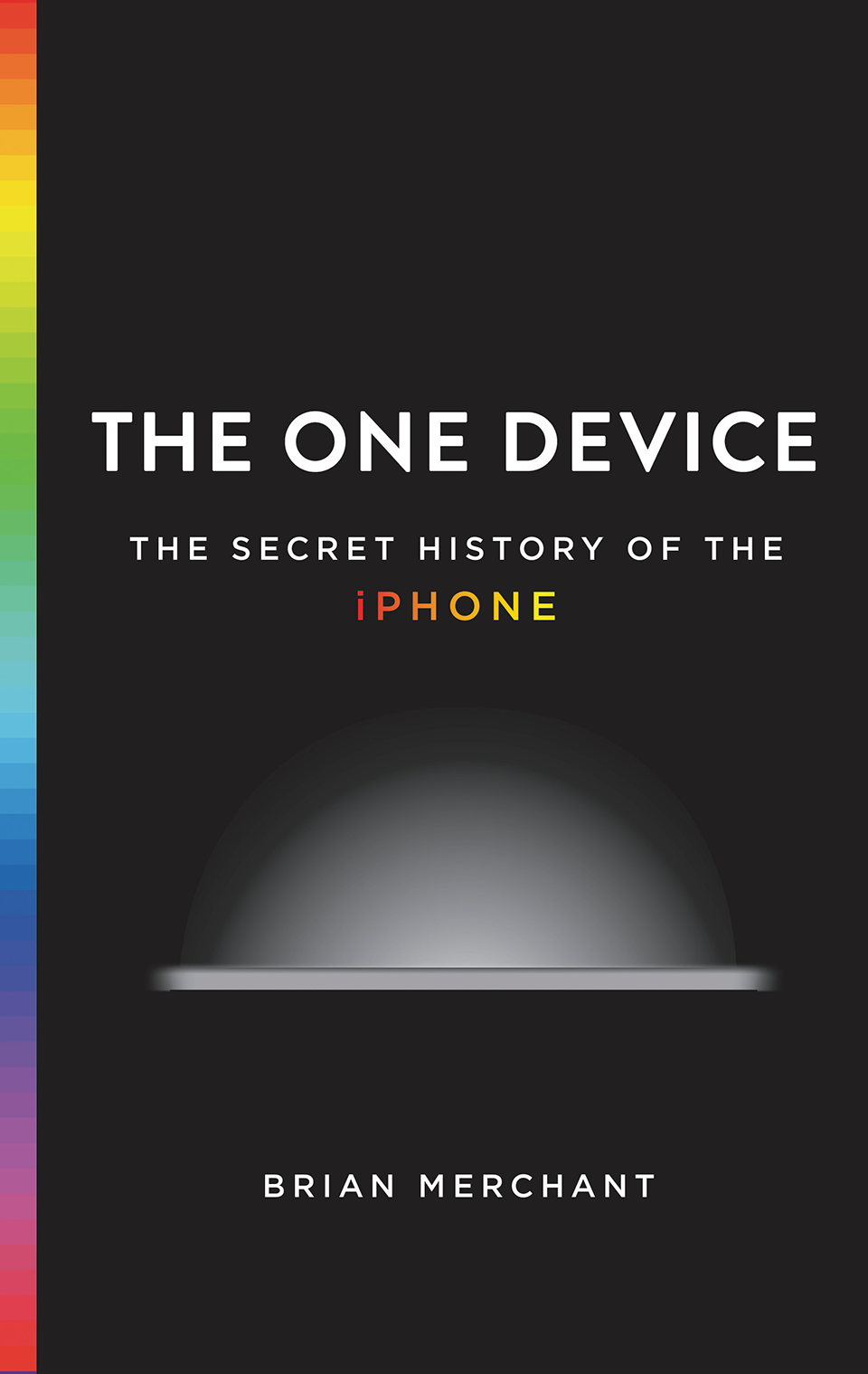Few would deny that the iPhone was the most significant technological breakthrough of the past decade or that their iPhone (or similar smartphone) is their most important possession—but how much do you really know about the device?
That is the question Brian Merchant found himself wondering a few years ago. The technology reporter had accidentally forgotten his iPhone in a taxi, and immediately became painfully aware of just how much he relied on it.
“I would do anything to make sure I had this thing back in my pocket,” he tells Fast Company, recalling how he took time off work to report the phone missing and attempted to find it. “I thought about what else in the world I would even do that for, and then I realized that even though I was a technology reporter, I felt like my grasp of this device was very thin beyond just as a consumer product.”
Merchant spent the next year and a half seeking to track down the many untold stories behind the iPhone. His journey took him from the tin mines of Bolivia to assembly plants in China, from conversations with those Apple employees who were in the room during the product’s invention to the unsung designers and engineers who were equally as instrumental in bringing it to life.
The result is a book that publishes today, on the device’s 10th anniversary, titled The One Device: The Secret History of the iPhone. Merchant recently sat down with Fast Company to discuss some of the history, mythology, and untold stories behind the only device most people would miss work to retrieve from the backseat of a taxi.
(The following interview has been condescend and edited in the interest of space.)
FC: What part of this book do you hope has the greatest impact on readers?
Brian Merchant: The way we conceive of the iPhone is very reductive—it’s very simple, it’s very useful to Apple but not much else. It’s a mythology of a product that we’ve been sold. I was just as guilty of buying into it as anyone. The story as I knew it was Steve Jobs and some dudes at Apple invented this thing and bequeathed it to the world. The end.

FC: You say the mythology you’re attempting to debunk has value to Apple, does that suggest they weren’t willing participants in this book?
BM: We had a series of polite conversations with Apple while writing the book. They were fully aware of what I was doing, but they never agreed to give me an interview or make an on-the-record comment.
FC: One of the assertions you make that flies in the face of the Steve Jobs’s mythology is that the iPhone’s success had a lot to do with fortuitous timing. How so?
BM: The window was there for the iPhone in the sense that consumer-facing multitouch touchscreen technology had just been innovated to the point where it was highly usable, processors had gotten powerful and low energy-consuming enough for a mobile device—so many factors converged to make it possible. That doesn’t make it inevitable or make it easy, but it made this buffet line of technologies and ideas that were there for the picking. What Apple did was it took them and made some serious leaps in innovation, such as getting multitouch onto a glass screen and getting Mac OS to run on a tiny handheld device. The way they integrated it and designed it and wrote the software for the user interface, that was really unparalleled at the time.
FC: In the book you describe other products and devices that had much of the same features and functionality as the iPhone, including a few that predated it, but none gained the same traction. Why did Apple’s version take over the world? Was it because of the success of the iPod?
BM: The iPod really elevated Apple’s status in a lot of ways, and not only that but it provided the impetus for them to do the iPhone in the first place. The reason why Steve Jobs was convinced to pursue an iPhone was because he was worried the increasingly smart cell phones would soon be able to load MP3s, and they would eat the iPod’s lunch. That was the business case that caused Jobs to pull the trigger on the iPhone, even though the technology for it had been available inside of Apple for a little while. Without the iPod, there’s no iPhone. It really gave Apple the confidence to pursue a consumer product outside of laptops and desktops.
FC: In the book you grapple with the question of whether the invention was ultimately a net positive or negative for society. Where do you land on that now?
BM: Any technology with mass adoption comes with a double-edged sword, with detrimental effects and societal boons. You’ll always have this tension between the benefits of constant connectivity and being able to network and stay in touch and organize a protest and call your loved ones from anywhere at anytime, with the constant distractions and concerns of addiction and the growth of the 24/7 work ethic.
What I found interesting is that I thought the iPhone inventors would be straightforwardly optimistic about their creation because they sacrificed so much of their lives to make it happen, but almost without fail they were all ambivalent.

FC: When you look at your phone, what do you see now that you didn’t before you began working on the book?
BM: Once you speak to these Chinese line workers who quit out of desperation after a year in the Foxconn factory, you see people working in these giant factory blocks that are unfathomably huge, you hear those stories about those sleepless nights to get the device ready, the divorces and personal relationships that were shattered, the cost of the innovations and the human costs, that’s un-ignorable.
When I have a second and I look at it, parts of it now remind me of that whole giant supply chain and this iPhone infrastructure that I traced in The One Device. But such is the power and ubiquity of this device that once I’m back to my routine and my day-to-day, it’s back to being just another tool.
Recognize your brand’s excellence by applying to this year’s Brands That Matter Awards before the early-rate deadline, May 3.
